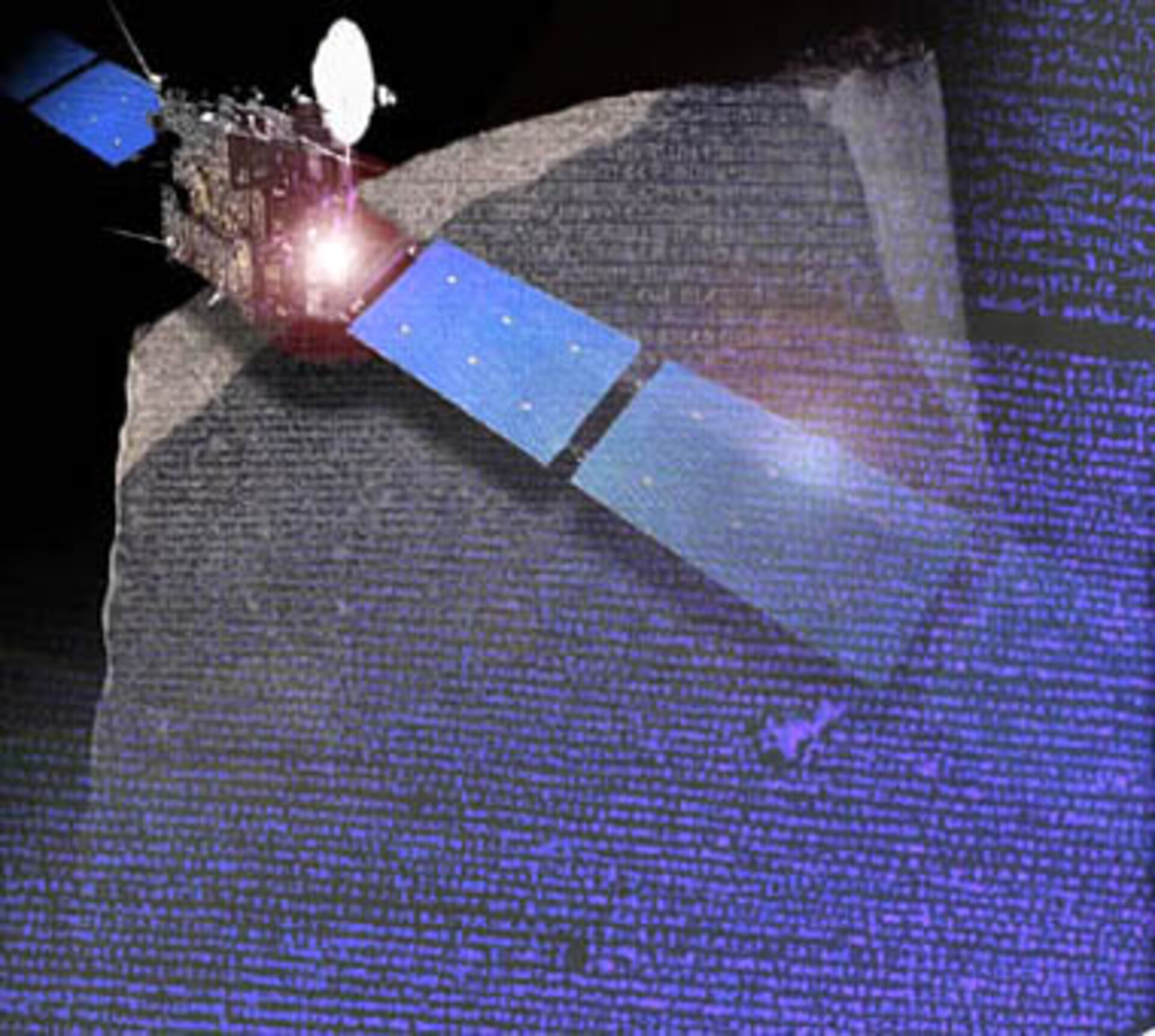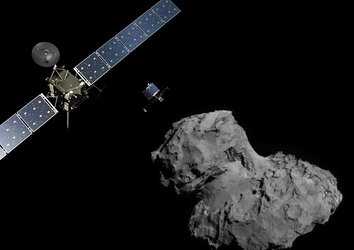Rosetta
ESA's Rosetta spacecraft will be the first to undertake the long-term exploration of a comet at close quarters. It comprises a large orbiter, which is designed to operate for a decade at large distances from the Sun, and a small lander. Each of these carries a large complement of scientific experiments designed to complete the most detailed study of a comet ever attempted.
After entering orbit around Comet 67P/Churyumov-Gerasimenko in 2014, the spacecraft will release a small lander onto the icy nucleus, then spend the next two years orbiting the comet as it heads towards the Sun. On the way to Comet Churyumov-Gerasimenko, Rosetta will receive gravity assists from Earth and Mars, and fly past main belt asteroids.
The orbiter
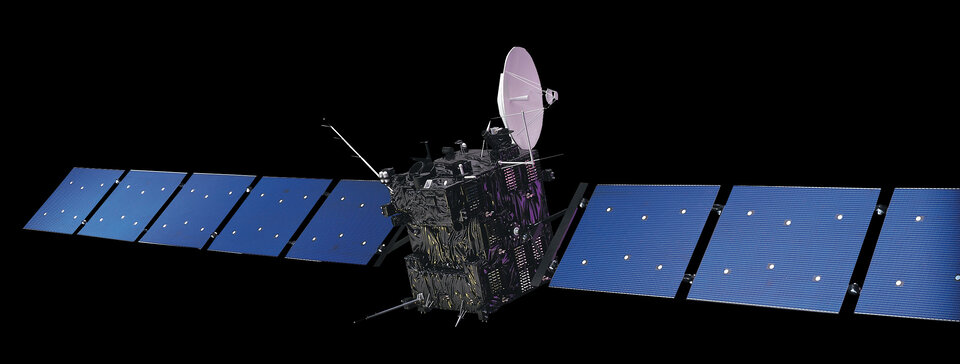
The main spacecraft, the orbiter, has dimensions of 2.8 x 2.1 x 2.0 metres, on which all subsystems and payload equipment are mounted.
There are two 14-metre solar panels with a total area of 64 square metres.
On one side of the orbiter is a 2.2-metre diameter communications dish – the steerable high-gain antenna. The lander is attached to the opposite face.
Instruments
The Rosetta orbiter has eleven scientific instruments:
- ALICE Ultraviolet Imaging Spectrometer
- CONSERT Comet Nucleus Sounding
- COSIMA Cometary Secondary Ion Mass Analyser
- GIADA Grain Impact Analyser and Dust Accumulator
- MIDAS Micro-Imaging Analysis System
- MIRO Microwave Instrument for the Rosetta Orbiter
- OSIRIS Rosetta Orbiter Imaging System
- ROSINA Rosetta Orbiter Spectrometer for Ion and Neutral Analysis
- RPC Rosetta Plasma Consortium
- RSI Radio Science Investigation
- VIRTIS Visible and Infrared Mapping Spectrometer
The lander
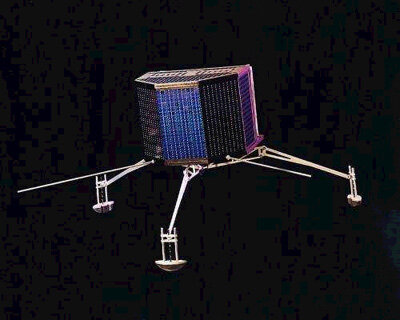
The 100-kilogram Rosetta lander is provided by a European consortium under the leadership of the German Aerospace Research Institute (DLR). Other members of the consortium are ESA and institutes from Austria, Finland, France, Hungary, Ireland, Italy and the UK.
Instruments
The Rosetta lander has nine scientific instruments:-
- APXS Alpha Proton X-ray Spectrometer
- ÇIVA / ROLIS Rosetta Lander Imaging System
- CONSERT Comet Nucleus Sounding
- COSAC Cometary Sampling and Composition experiment
- MODULUS PTOLEMY Evolved Gas Analyser
- MUPUS Multi-Purpose Sensor for Surface and Subsurface Science
- ROMAP RoLand Magnetometer and Plasma Monitor
- SD2 Sample and Distribution Device
- SESAME Surface Electrical and Acoustic Monitoring Experiment, Dust Impact Monitor
Launch
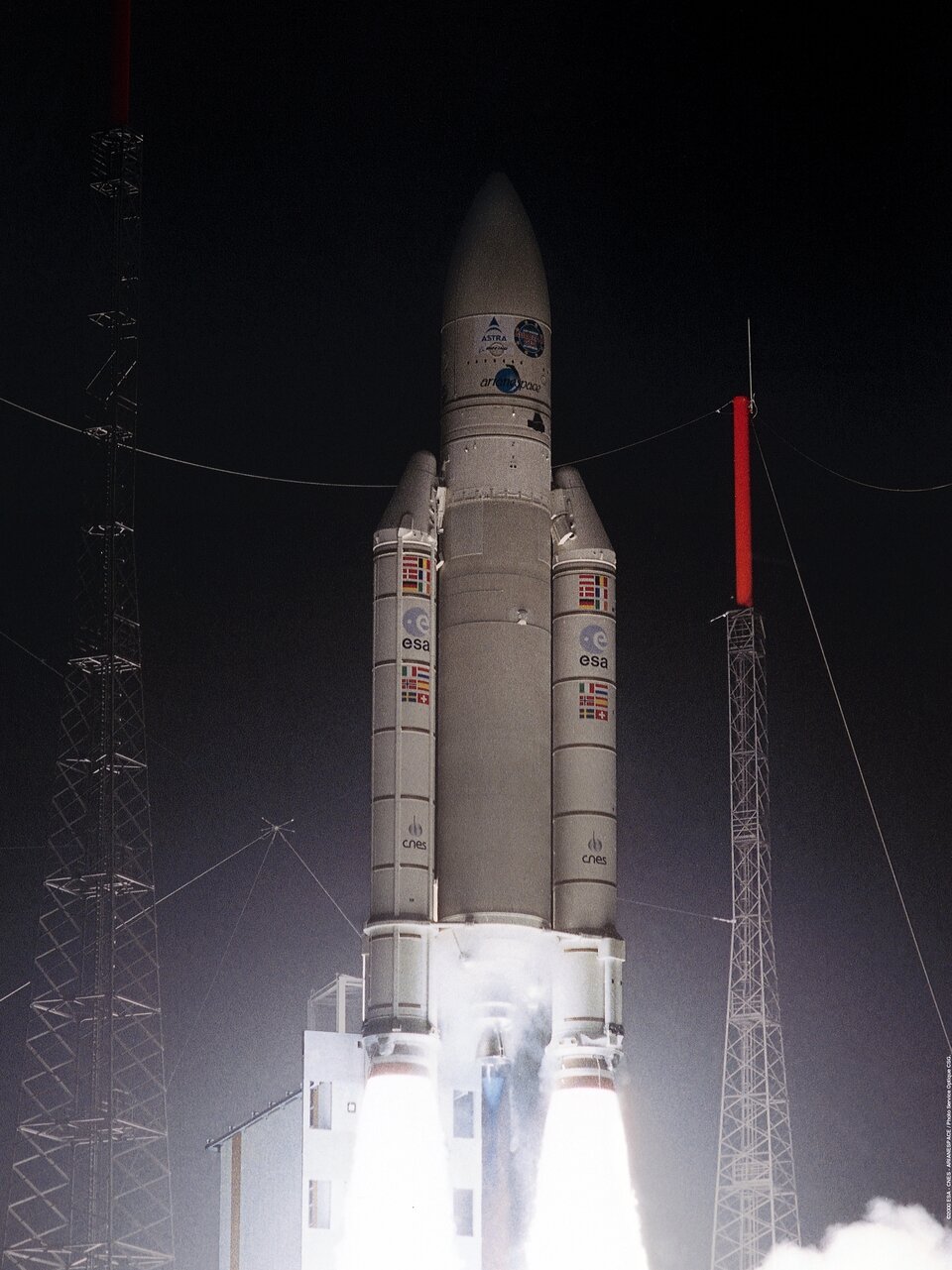
Rosetta was launched as flight 158 on 2 March 2004 by an Ariane-5G rocket from Kourou, French Guiana.
After burn-out of the lower stage, the spacecraft and upper stage remained in Earth parking orbit (4000 x 200 kilometres) for about two hours. Ariane's upper stage then ignited to boost Rosetta into its interplanetary trajectory, before separating from the spacecraft.
The payload weighs approximately 3000 kilograms (fully fuelled) including 1670 kilograms of propellant, 165 kilograms of scientific payload for the orbiter and 100 kilograms for the lander.
The journey
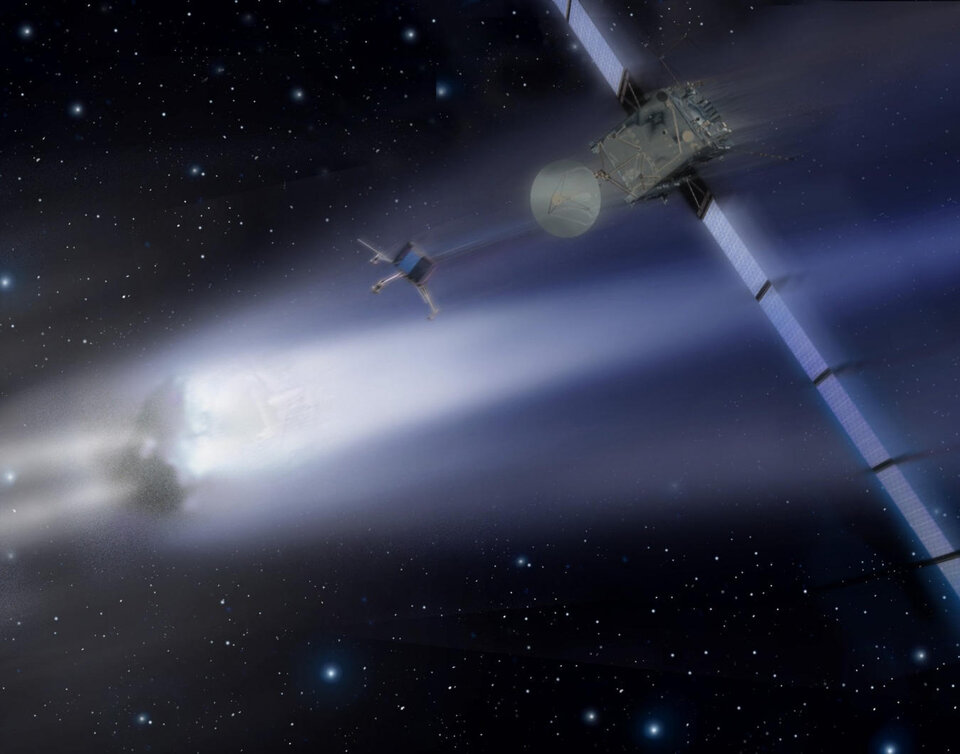
Rosetta's journey takes it out to 5.25 AU (about 790 million kilometres from the Sun).
The journey to Comet 67P/Churyumov-Gerasimenko lasts 10 years:
Launch (March 2004)
First Earth fly-by (November 2005)
Mars fly-by (February 2007)
Second Earth fly-by (November 2007)
Third Earth fly-by (November 2009)
Deep-space hibernation (May 2011 - January 2014)
During its journey, Rosetta will fly-by one or more asteroids
Comet approach (January-May 2014)
Comet mapping / Characterisation (August 2014)
Landing on the comet (November 2014)
Escorting the comet around the Sun (November 2014 - December 2015)
The orbiter continues to orbit Comet 67P/Churyumov-Gerasimenko, observing what happens as the icy nucleus approaches the Sun and then travels away from it. The mission ends in December 2015. Rosetta will once again pass close to Earth’s orbit, more than 4000 days after its adventure began.
The comet
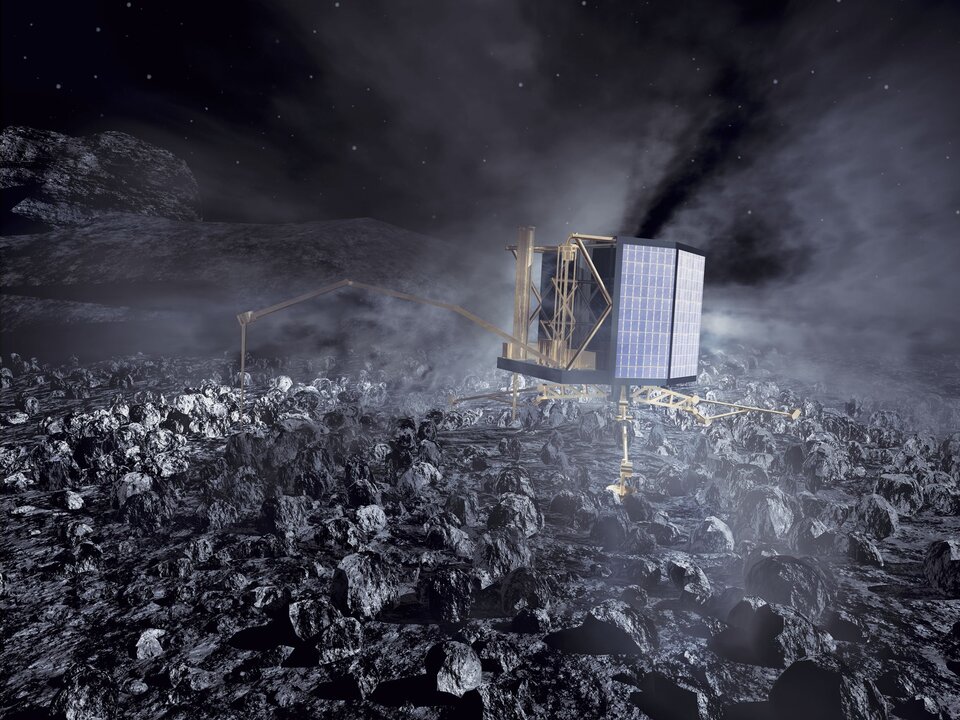
Comet 67P/Churyumov-Gerasimenko has a nucleus about 4 kilometres wide. It orbits aroud the Sun every 6.6 years, between 186 million kilometres and 857 million kilometres from the Sun.
It was discovered in 1969 by K. Churyumov (University of Kiev, Ukraine) and S. Gerasimenko (Institute of Astrophysics Dushanbe, Tajikistan)
The team

Rosetta’s industrial team involves more than 50 contractors from 14 European countries and the United States. The prime spacecraft contractor is Astrium Germany. Major subcontractors are Astrium UK (spacecraft platform), Astrium France (spacecraft avionics) and Alenia Spazio (assembly, integration and verification).
The 100-kilogram Rosetta lander is provided by a European consortium under the leadership of the German Aerospace Research Institute (DLR).
The cost of the Rosetta project is around 1000 million Euros (including the scientific instruments funded by national agencies)
Operations
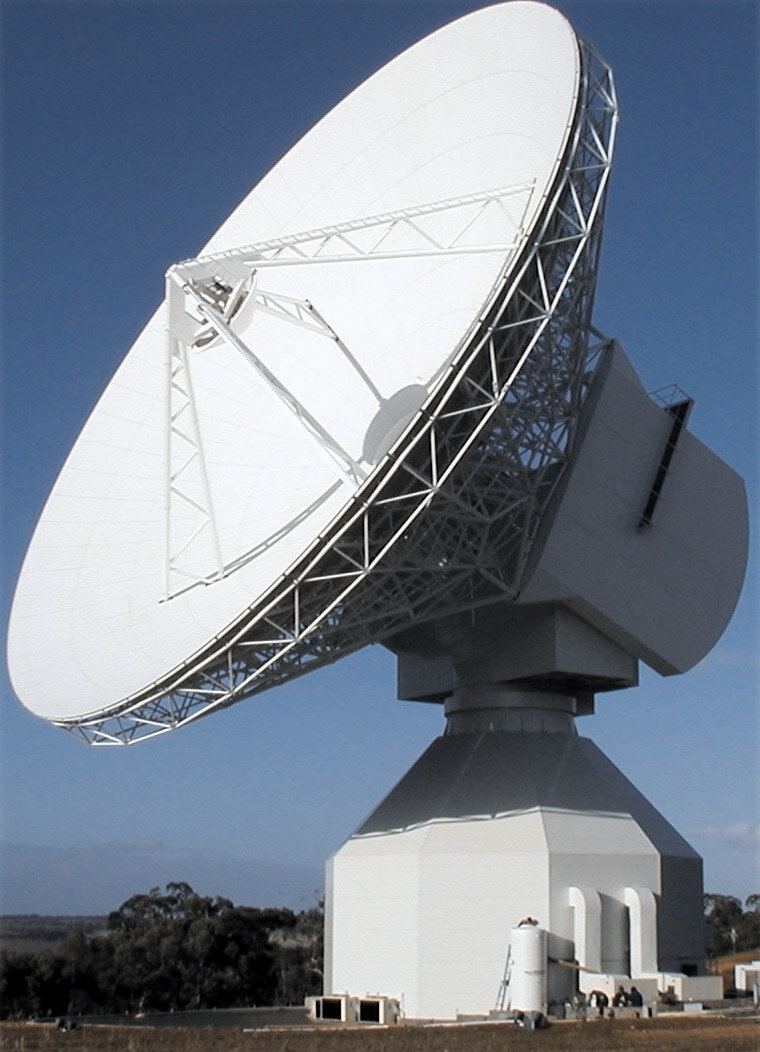
Mission Operations Centre: European Space Operations Centre (ESOC), Darmstadt, Germany
Prime Ground Station: New Norcia, near Perth, Australia
Science Operations Centre: Collocated at ESOC (Darmstadt, Germany) and ESTEC (Noordwijk, Netherlands)
Lander Control Centre: DLR, Cologne, Germany
Lander Science Centre: CNES, Toulouse, France
Planned operational duration: 12 years
| ROSETTA ARTICLES |
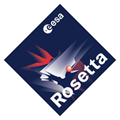 |
|
| GIOTTO ARTICLES |
 |
Giotto was ESA's first mission to study comets. It visited Comet Halley in 1986 and Comet Grigg-Skjellerup in 1992.
|
Articles


